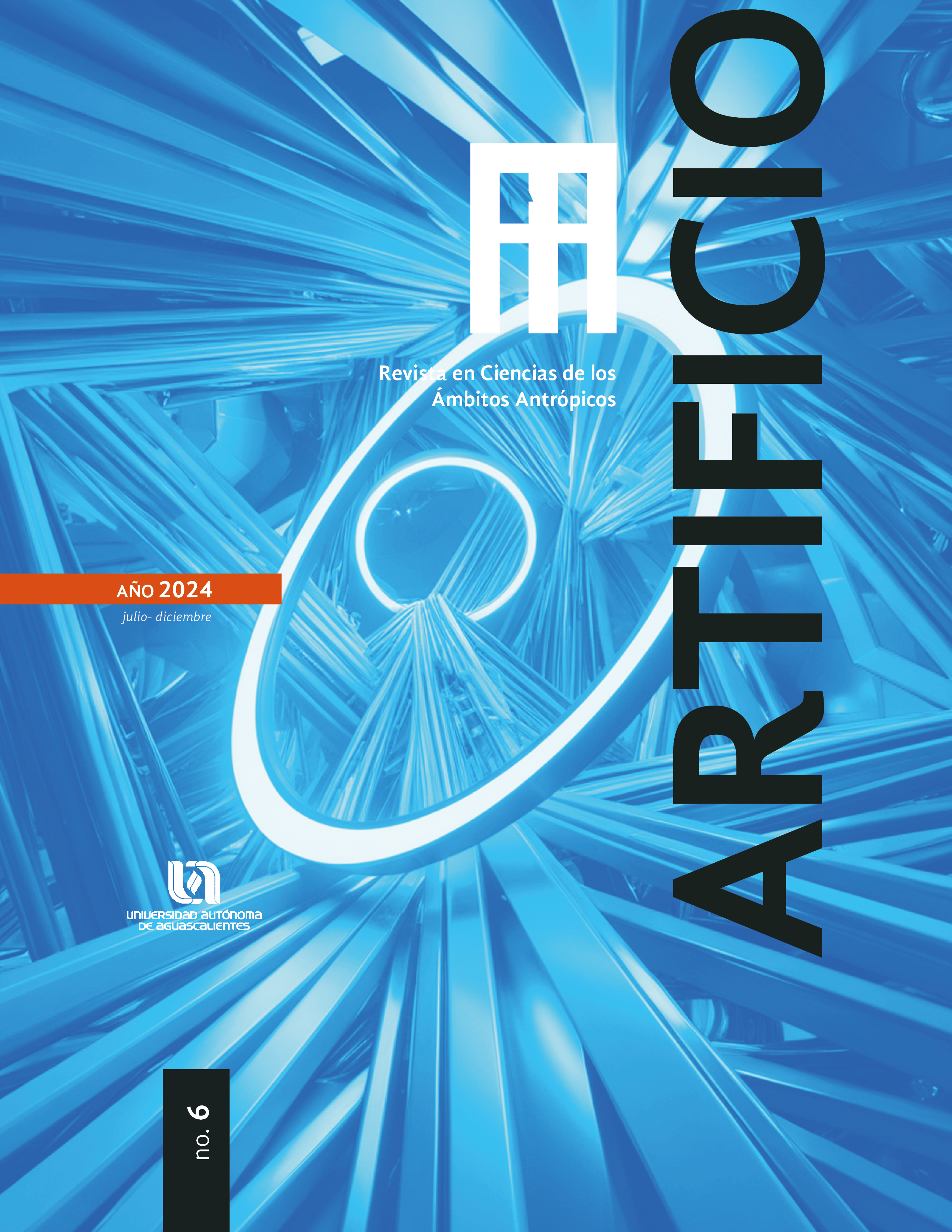Evolution and approach of the concept of the quality life in the New Urban Agenda Habitat III
DOI:
https://doi.org/10.33064/artificio620246076Keywords:
Well-being, quality of life, New Urban Agenda , Habitat IIIAbstract
The quality of life is an ideal state of personal well-being that encompasses various objective and subjective dimensions, influenced by social, economic, and environmental factors at both individual and collective levels. These dimensions are universal and indiscriminate, but the attribution of value is individual and can therefore vary between individuals. The purpose of this essay is to address the emergence of the conceptualization of “quality of life” through a chronology and historical background that emerged in the 20th century. By conducting a literature review using databases such as Scopus, Scielo, Google Scholar, Redalyc, and a sequence of events, the most relevant findings regarding its construct in the decades of the 20th century are outlined. Additionally, the approach to “quality of life” in the objectives of the “New Urban Agenda Habitat III” and the “Regional Action Plan for the implementation of the New Urban Agenda in Latin America and the Caribbean 2016-2036” is analyzed.
Downloads
References
Adelman, J. (2008). Observando a Colombia: Albert O. Hirschman y la Economía del Desarrollo. Revista Desarrollo y Sociedad, 62, 1–37. https://doi.org/10.13043/dys.62.1 DOI: https://doi.org/10.13043/dys.62.1
Arita Watanabe, Yasuko, B. (2005). La Capacidad Y El Bienestar Subjetivo Como Dimensiones De Estudio De La Calidad De Vida. Revista Colombiana de Psicología, 14, 73–79. http://www.redalyc.org/articulo.oa?id=80401407
Baldwin, P. (1997). “The past rise of social security: historical trends and patterns” en Giersch, H. (ed.), Reforming the welfare state, Berlín: Egon-Sohmen Foundation, pp. 3-24. DOI: https://doi.org/10.1007/978-3-642-60497-3_1
Bresser-Pereira, L. C. (2014). Desenvolvimento, progresso e crescimento econômico. Lua Nova: Revista de Cultura e Política, 93, 33–60. https://doi.org/10.1590/s0102-64452014000300003 DOI: https://doi.org/10.1590/S0102-64452014000300003
Bourdieu, P. (2000). La distinción criterios y bases sociales del gusto. España: Taurus.
Borthwick-Duffy, S. (1992). Quality of life and quality of care in mental retardation. In: Rowitz L (Editor). Mental retardation in the year 2000 Berlin: Springer-Verlag;52-56. DOI: https://doi.org/10.1007/978-1-4613-9115-9_4
Campbell A., Converse P., & Rodgers W. (1976). The Quality of American Life. New York: Russell Sage.
Cohen, G. (2001). Si eres igualitarista, ¿cómo es que eres tan rico?, Barcelona, Paidós.
Cummins, R. (2000). Objective and subjective quality of life: An interactive model. Social Indicators Research, 52, 55-72. DOI: https://doi.org/10.1023/A:1007027822521
De Mejía, B. & Merchán, M. (2007). Calidad de vida relacionada con la salud (CVRS) en adultos mayores de 60 años: una aproximación teórica. Revista Hacia La Promoción de La Salud, 12, 11–24. https://www.redalyc.org/pdf/3091/Resumenes/Resumen_309126689002_1.pdf
Erikson, R. (1998). Descripciones de la desigualdad: el enfoque sueco de la investigación sobre el bienestar. p. 101-120. En: Sen M, Nussbaum M. (comp.). La calidad de vida. México: Fondo de Cultura Económica.
Garay, J. (1996). Calidad de vida. Geriatrika, 12(4), 35–43. https://doi.org/10.35563/revan.v4i2.230 DOI: https://doi.org/10.35563/revan.v4i2.230
Kajanova, J. (2002) “Theoretical basis for the measurement of quality of life”. En Social Indicators Research Vol 16. Kluwer Academic Publishers. The Netherlands pp 63-80 DOI: https://doi.org/10.1007/978-94-010-0271-4_5
La Nueva Agenda Urbana de las Naciones Unidas sobre la Vivienda y el Desarrollo Urbano Sostenible (Hábitat III), 2017.
Levy, L. & Anderson L. (1980). La tensión psicosocial, población, ambiente y calidad de vida. Editorial. El Manual Moderno, México: 7.
Lukomski, A. (2000). Calidad de vida: historia y futuro de un concepto problema. P. 153-161. En: Boladeras M. (ed.). Bioética y calidad de vida. Bogotá: Ediciones El Bosque. (Colección Bíos y Ethos).
Informe de la Organización de la naciones Unidas, ONU (1954).
Plan de Acción Regional para la implementación de la Nueva Agenda Urbana en América Latina y el Caribe 2016-2036.
Ramírez-Coronel, A. A., Malo-Larrea, A., Martínez-Suarez, P. C., Montánchez-Torres, M. L., Torracchi-Carrasco, E., & González-León, F. M. (2020). Origin, evolution and research on quality of life: Systematic review. Archivos Venezolanos de Farmacologia y Terapeutica, 39(8), 954–959. https://doi.org/10.5281/zenodo.4543649
Shah, N y Marks, N. (2004). A well-being manifesto for a flourishing society. Nef. Londres. DOI: https://doi.org/10.1108/17465729200400023
Veiga, J. (2005). Desenvolvimento sustentável: o desafio do século XXI. Garamond.
Veenhoven, R. (1998). Calidad de vida y felicidad: No es exactamente lo mismo. En G. De Girolamo (Ed.), Salud y calidad de vida. Roma: II Pensamiento científico.
Veenhoven, R. (2000) “Why social policy needs subjective indicators?” En Casas, F y Saurina, C. (edits). Proceedings of the Third Conference of the ISQOLS. Universidad de Girona. Pp. 807-817.
Downloads
Published
Versions
- 2024-12-26 (2)
- 2024-12-19 (1)
How to Cite
Issue
Section
License
Copyright (c) 2024 Artificium

This work is licensed under a Creative Commons Attribution-NonCommercial-ShareAlike 4.0 International License.
Artificio Journal provides open access to its content, based on the principle that offering free access to research helps to increase the global exchange of knowledge. Artificio does not and will not charge any subscription fees to its readers, nor to authors for submitting, processing or publishing their articles.
As a condition of publication, authors agree to release their copyright under a shared license, specifically the Creative Commons Attribution-NonCommercial-ShareAlike 4.0 International license.
This licence allows anyone to share, copy and redistribute the material in any medium or format under the following terms:
*Credit the author of the text
*Do not use the material for commercial purposes
*Do not transform or modify the material.











